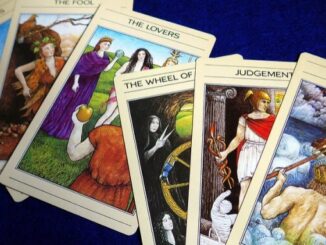
Arguably, nearly every game, even if it is not specifically about money, or economics, has some element of economics embedded in it, because there is nearly always a return of ‘value’ from the play decisions that players make. This article, however, looks at in-game economies in a more literal sense, focusing on the creation and destruction of value you will commonly see in games where there is money, or other items with material value, or in gamification applications with collectable and exchangeable points, for example.
Sources and Sinks

Currency, or points, or whatever the unit of value you have created for your game or gamification design, must come from somewhere. These are your ‘Sources’, and you often see them implemented in games through quests (for which you get rewarded for completion), looting, (either by ‘finding’ in a landscape or stealing from the corpses of vanquished foes), or maybe through minigames. Although you often hear these referred to as ‘gold sources’ or ‘gold taps’, they don’t necessarily refer to currency, both usually to anything which has value within the game, and so could include things which could not necessarily be exchangeable for currency (real or in the game world), such as life points.
The places in your game or gamification application where the value created by sources is destroyed, are called ‘Sinks’. In the game, quite often this is not a literal destruction, but a transfer of value from one form to another, because the most common sink in most MMORPGs is the shop, where you can swap your hard-earned gold for a kick-ass sword, or contrarywise, trade in the leather armour you looted from a low-grade enemy for a few coppers.
The dangers of a poorly balanced economy

It can be tricky to get right, but balancing your sources and sinks is essential if you want a compelling game experience, and even more important if you have an exchange between the ‘soft’ (in-game) currencies and ‘hard’ (real world cash) currency as part of the way you monetise the game.
If your sources are too productive, or you do not have enough sinks to destroy the value that has been created, you will get inflation. Whatever it is, gold or other resources, that is too available, will effectively lose value. The game becomes too easy to progress through, and if you have real-world monetisation connection, you will find that demand for real world transactions will plummet.
If the opposite is true, and your sinks outstrip your sources you will end up with deflation, and in extreme cases, such as the situation found with the New World in-game economy, players have started to hoard (game) cash, and are instead bartering for items, which they would ordinarily buy with that cash, but are now unable to do so.
Interestingly, inflation can also have benefits. In games with a fixed end point, allowing players to find more and more efficient ways to farm gold as they level up, gives them a great sense of progression but can be balanced by the increasing prices of high-level items, the sinks. Inflation also helps to tackle the ‘latecomer disadvantage’ when someone comes late to a game, maybe attracted by a new expansion, but could be discouraged by the amount of effort required to reach this point in the game. Controlled inflation makes more currency available to players early in the game, making it easier for them to progress and keeping them engaged.
There are multiple mechanisms to control the flow of value in the game including:
- Incremental mechanics – where sources and sinks increase proportionally as the game progresses
- Resets – Starting everybody back at zero from time to time will obviously combat inflation, but can be controversial – as many players will resent losing what they have worked hard for
- Gambling – If the mechanics of gambling in the game are designed as they are in casinos – the house always wins’ – then this is an effective way of removing value from the game
- Mega high cost sinks – Much like the real world, items can be made very attractive merely by their unattainability, and having a few items which have very high costs will drive players to want them and thus remove high quantities of value from the game in single transactions
- Taxation – where the game itself takes a small cut for transactions that happen in the game – for example, a ‘gaming house’ takes a small fee if two players want to wager against each other, or the mages guild charges a fee to bring a dead warrior back to life
Given the complexity of designing an in-game economy and the constant need to balance it throughout the life of a game, it is small wonder that there is an actual job, which deals with this and nothing else – The Game Economy Designer
How in-game economies foster engagement
This is not however, just a matter of making the numbers work, or in the case of a monetised game, ensuring a stable revenue. These mechanisms are also all about creating a great play experience

Having multiple sources and sinks give variety to your game/gamification, and opens up possibilities for players to make meaningful choices
Multiple sources usually also means that you will have multiple types of ‘currency’ which can be used in many different ways, reflecting different paths to ‘progress’. For example, you might have ‘gold’ or a similar resource representing money. This tends (like in real life) to be the most widely transferable currency, and can be swapped for goods, services, and even other forms of ‘currency’, e.g. if you could ‘buy’ extra lives.
Another form of ‘currency’ could include lives, which you ‘spend’ in order to continue playing and whose ‘sinks’ would be strong(er) enemies, disease, poison, even extreme exhaustion or old age. Yet another is the staple of many business learning games, ‘effort’ – often implemented as actual people in worker placement games.
Ultimately, all of these things are actually ‘points’. Points in games are usually of two kinds, cumulative, non-exchangeable points – for example, experience points (XP) which allow you to level up in an RPG, or exchangeable points which you can spend to get other stuff you need to move on in the game. In Settlers of Catan, for example, you spend wood, grain, wool and brick to build roads and settlements, or you can swap two of one resource for one of another
Exchangeable points
In fact, exchangeable points are pretty much the bread and butter of games, and money is not really a special case; it’s just an example of widely-applicable exchangeable points.
What the exchangeable points are actually called is usually a function of the theme and aesthetics of the game, as is what the sources and sinks themselves are called. The wool, wood etc of Catan (which is about building settlements) function extremely similarly to, for example, spell points for a Mage in an RPG, but only at the point of use, where they are both swapped for something else that creates ‘progress’ for the player. In Catan it is the building of a road, in the RPG it is a kick-ass Fireball which vapourises a group of enemies. The sources and sinks differ considerably, though. In Catan the resources are ‘harvested’, generating resources using a combination of the mechanisms of terrain control and random number generation. In the RPG the spell points are a function of aspects of a character (level, and stats such as ‘wisdom’ or ‘magic’). As far as the sinks go, in Catan, the sink creates a permanent (at least in the original game) terrain control, which itself helps to generate more resources in the future. In the RPG, the fireball solves an immediate problem, but does not otherwise impact the game further.
For each of the aspects of a game economy you therefore have design choices about how a particular resource is created, including what the source is called, or represents, narratively, how it functions (in terms of a single or group of connected game mechanism – with an effectively unlimited number of combinations possible), and how that source responds e.g. in its rate of production in the context of a game situation or character/player trait. You have an almost infinite number of choices of what to call the resource and what it represents in the game. Finally, in terms of the sink(s), you have the same kind of freedom you have in designing the sources.
This gives considerable scope for creating narrative and supporting a game theme, and facilitating meaningful player decisions and gameplay.
Given the almost infinite possibilities, it would be impossible to list all of them, but here are a few possibilities you could implement in your game design using exchangeable points.
| Sources | Sinks | Names of resources |
| Payment for services (e.g. quests) | Exchange for goods | Gold |
| Earn from grinding | Exchange for services | Effort |
| Win second prize in a beauty contest (mystery box) | Bribe | Workers (e.g. Farmers/ Guards/Merchants) |
| Looting | Get robbed | Gene pool diversity |
| Random generation | Build something | Time |
| Earning interest on investment | Exert a temporary effect | Any form of ‘power’ |
| Harvesting from Terrain or other owned resource | Decay (e.g. at end of a turn) or depreciation through wear | Points (without further narrative wrapping) |
| Crafting | Lose a wager | Life-force |
Key takeaways on in-game economies
- Even games which, on the surface, do not appear to be about money or Economics, usually have some underlying system for creation, exchange and destruction of value.
- Value is created by ‘Sources’ and destroyed or exchanged by ‘Sinks’.
- Poor balanced in-game economies can cause inflation and deflation and adversely affect engagement.
- Design of in-game economies also provides opportunities to create strong narratives and themes, and foster player engagement by allowing players to exercise autonomy and make meaningful choices.
- The combination of design choices for sources, sinks and the resource created by them is effectively unlimited and gives the game designer massive scope for originality and creativity.
- James Bore – The Ransomeware Game - 13th February 2024
- Ipsodeckso – Risky Business - 23rd January 2024
- Review – Luma World Games - 15th December 2023





Be the first to comment